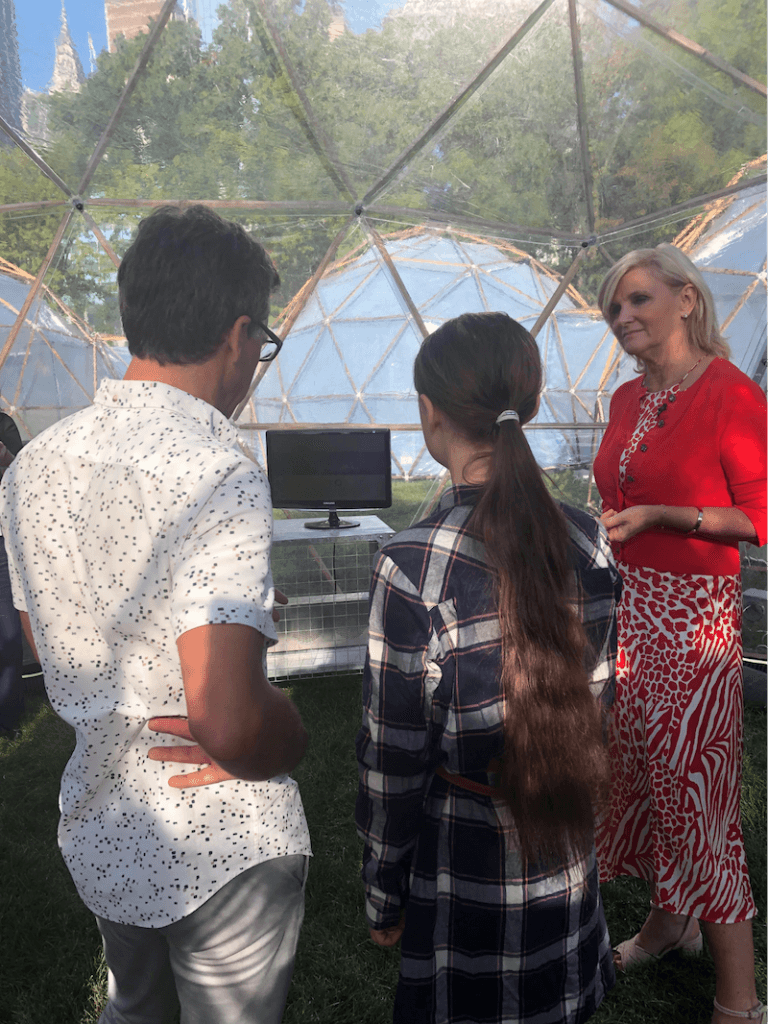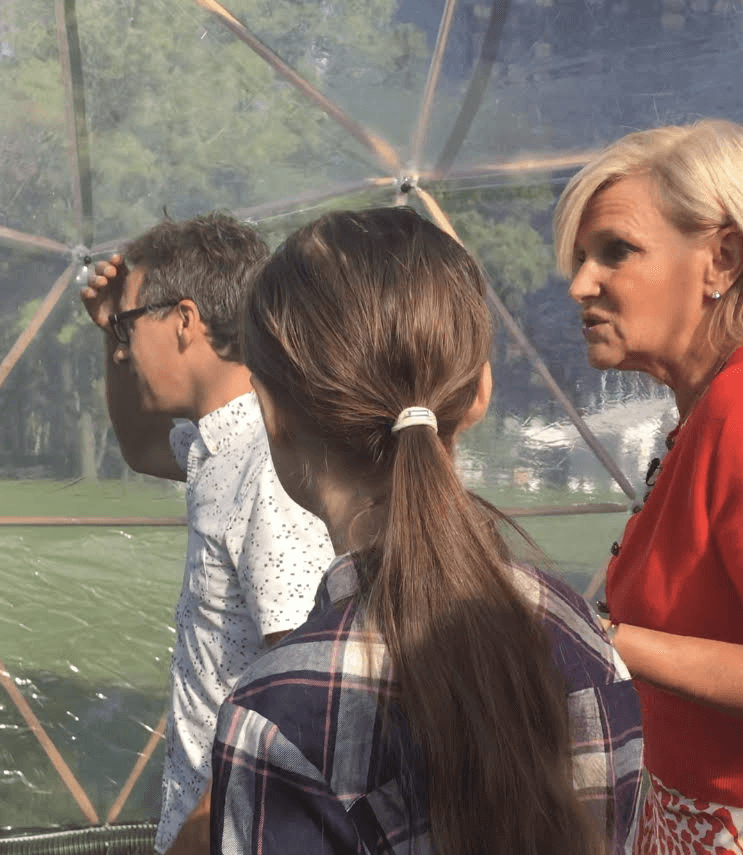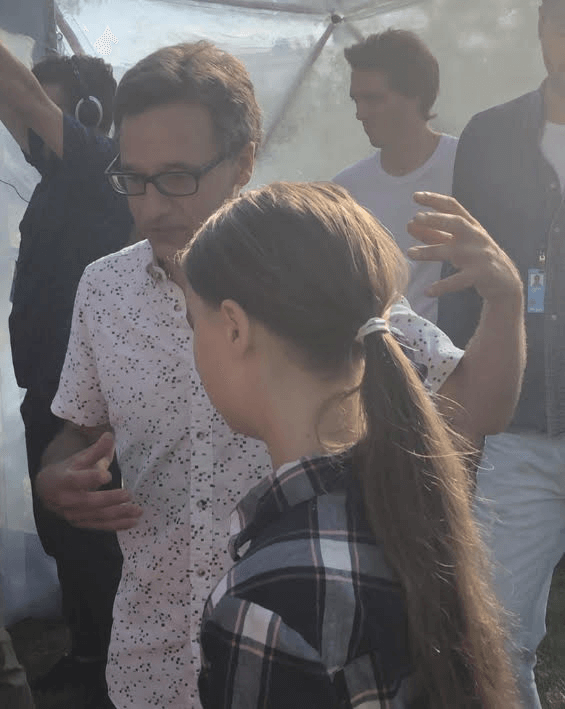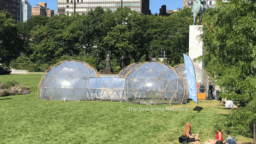While 16-year-old Swedish climate activist Greta Thunberg was at the United Nations for the Youth Climate Summit, artist Michael Pinsky walked her through his “pollution pods” — an installation of five climate-controlled chambers meant to emulate the current air quality in five different cities around the world.
By pumping heat and various perfumes into 19-foot-wide plastic domes, Pinsky is able to mimic what breathing conditions are like in Tautra, London, New Delhi, Beijing and São Paulo.
Currently, air pollution is responsible for 7 million deaths around the world each year. Pinsky’s pollution pods are designed to bring attention to this pressing issue.
For the last year or so, Pinsky’s pollution pods have been traveling the globe, but this is the first time they’ve made it to the United Nations. It was made possible through a partnership with the World Health Organization (WHO).
Pod 1: Tautra
The first pod on the tour mimics the air quality of Tautra, a small island in Norway with a population of less than 100. Understandably, the air in this pod is cool and easy to breathe in. If it weren’t for the plastic cover designed to keep New York City air out, one could even imagine the feel of a brisk Scandinavian breeze.

Image: The University Network
Overall, Norway’s air quality ranks 11th in the world, according to the Environmental Performance Index.
However, the same can’t be said about London, which is the next pod on the tour.
Pod 2: London
As Thunberg, Pinsky and Maria Neira, director of the Department of Public Health and Environment at the WHO, make their way through the plastic covered hallway connecting the Tautra pod to the London pod, it starts to feel a little bit warmer and hints of diesel fuel fill the air.

Image: The University Network
London has a problem. One in five children living in the city currently have asthma, Sustainability Times reports.
“We are investing in our children’s educations, and while they are waiting on the bus to go to school, they are breathing polluted air that is going to their brain and affecting their development,” Neira said.
But luckily, it’s a relatively solvable problem, Pinsky explains. Londoners just need to stop driving.
And compared to some of the other cities included in this installation, London’s air is not all that bad.
Things get a lot worse at the next pod — New Delhi.
Pod 3: New Delhi
The air in the New Delhi pod is hot, thick and sticky, and it smells like diesel fuel and burnt trash. Visibly, it’s hard to see. And physically, it’s miserable to breathe in. It is by far the most suffocating pod in the instillation.
“New Delhi has an enormous problem, but it’s not a simple problem,” Pinsky said.
“We are here for one minute, and we are already suffering,” said Neira. “Imagine the millions of people living permanently in these conditions …. It’s absolutely unacceptable.”
In 2017, toxic air caused 1.24 million deaths in India, alone. Children growing up in New Delhi are practically doomed from the day they’re born.
And, worldwide, one-third of deaths from heart disease, lung cancer and stroke are due to air pollution, according to the WHO.
The tour continues with the Beijing pod.
Pod 4: Beijing
Although the air in the Beijing pod is still hot, smokey and hard to see through, it’s a relief compared to New Delhi.

Image: The University Network
The air quality in China’s capital city hit rock bottom around 2012, with smog being a major concern. That year, 1 million people reportedly died in China due to air pollution.
In recent years, however, Beijing has done a lot to lower its air pollution, and has seen many more blue skies as a result. Yet, the city still has a lot of work to do. Currently, it still doesn’t meet the air quality levels recommended by the WHO.
“When it starts to get a little bit cold, (people in Beijing) are still using wood and coal to keep their houses warm,” Pinsky said. “And that can lead to quite low levels of visibility.”
The last stop on the tour is the São Paulo pod.
Pod 5: São Paulo
Coming from the Beijing pod, the visibility in the São Paulo pod first appears quite clear. However, Pinsky says he pumps ozone into the São Paulo pod to replicate the levels of industrial smog polluting the Brazilian city.

Image: The University Network
In addition to being detrimental to lung health, ozone can impair someone’s ability to smell.
“I bring people into this room last because it burns that fat on your nostril hairs, and then you can’t smell so well afterwards,” Pinsky said.
Pinsky’s path to the pods
After escaping the final pod, Pinsky took a moment to describe his motivation behind this installation.
“I came to this piece through making lots of work about climate change and struggling to engage people with climate change because it’s such an epic sort of thing to deal with,” Pinsky said. “People are anxious about it, but they don’t know what to do about it. So, in a way, this piece is an attempt to almost play more towards a selfish side. If we can deal with air pollution, which affects us straight away and affects our children straight away — not in the future — by dealing with that, you’re also dealing with climate change.”
Pinsky has toured his pollution pods around various areas of the world, and has seen many different reactions.
“It affects people in different ways,” Pinsky said. “Some people who come through here who are used to this type of pollution will come through here and say, ‘Michael, that’s really not that bad.’ And I’ve had people from the west of Ireland, and they can’t get through. They just physically can’t get through.”
Greta’s reaction
During the tour, Thunberg stayed quiet. Presumably, she was taking it all in.
After the tour, however, she reacted with gratitude for Pinsky’s efforts.
“If people can experience this — how people around the world live every single day — I think that will bring lots of attention,” Thunberg said. “And I think people will be more encouraged to deal with this problem.
“Everything is just so connected — the climate crisis and air pollution — it’s just so connected, and we cannot solve one without solving the other.”



